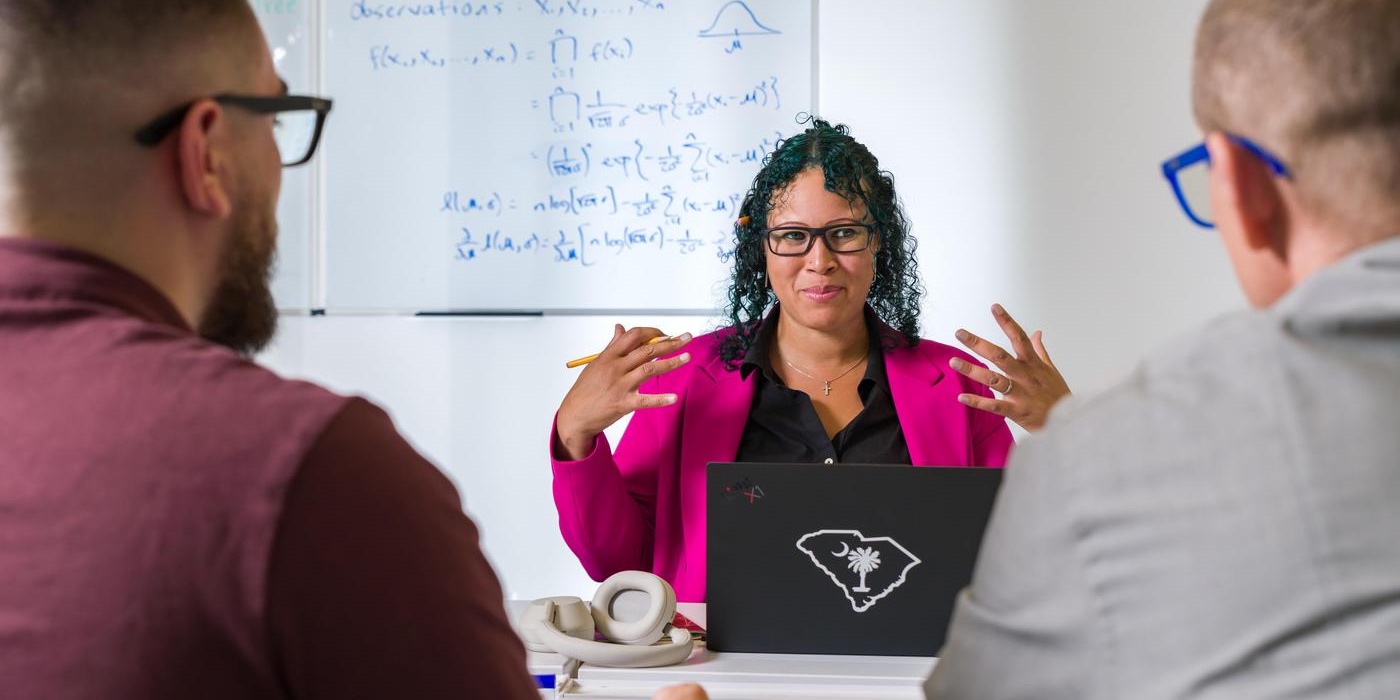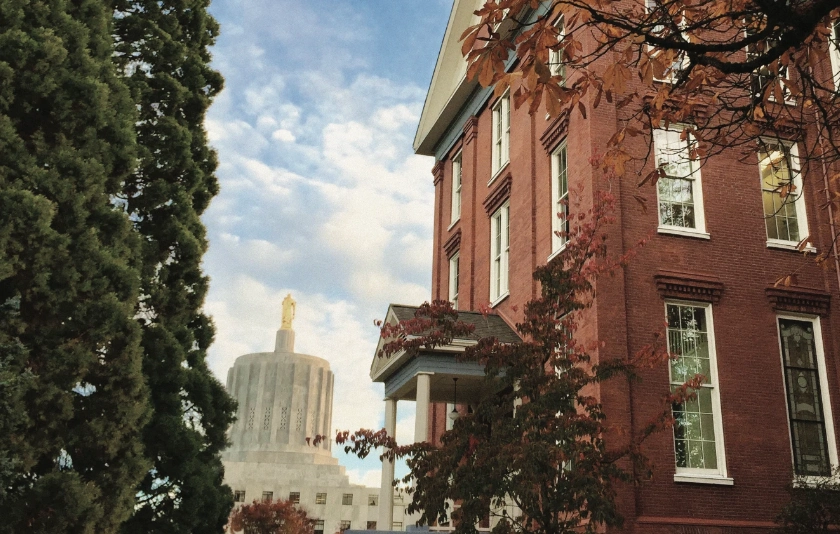With experience in the private sector and research interests in a variety of fields from meteorology to engineering, Assistant Professor of Data Science Kristen Gore brings a valuable perspective to Willamette’s School of Computing & Information Sciences. During her career, she has drawn on the inspiration of engineers and scholars throughout history who have paved the way for women in technology.
Gore recently presented about the impact women have had in the technology sector at WU TechDay, a day-long event on Willamette’s Salem campus. We reached out to learn more about gender inequities in technology fields and what can be done to address them.
1. You have a distinct professional path to data science. How did your journey through multiple fields and through the private sector inform your perspective?
Gore: I’ve always known that I was interested in a lot of different fields (aerospace engineering, meteorology, education statistics, etc.), so I needed a degree that would give me a skillset I could use in a variety of applications. That’s why adding statistics as a second major was one of my best decisions. It opened my world to many different possibilities. It’s one of the few majors that lets you switch from meteorology to biostatistics to semiconductor physics to business analytics. I never feel pigeonholed because of it.
As for my experience in the private sector, working for a global tech company like Hewlett-Packard shaped how I approach problems because as a consultant, I knew that the final answer was never solely determined by the mathematical answer. The macro-level business interests, budget and resource constraints, staffing limitations, schedules, project scope, and business priorities all had to be considered in my recommendations. It framed my viewpoint that the implementation of data science methods has to be rooted in practicality.
2. Are there any women in the history of technology that particularly inspire you?
Gore: Absolutely — too many to name, but here are my favorites. First, my “NASA Fab 5”: Valerie Thomas, Melba Roy Mouton, Katherine Johnson, Mary Jackson, and Dorothy Vaughan. Advancements in aerospace engineering have led to a lot of advancements in the fields of reliability and statistical engineering, which are my fields of research , so I’m thankful for the contributions these women have made to not only the field of aerospace engineering but in the paths they paved for other underrepresented minorities in STEM.
I’m also a huge fan of Cathy O’Neil and Joy Buolamwini for the contributions they’ve made in the field of AI ethics. Anyone reading this right now should buy their books immediately.
3. What does the data say about the state of women and gender minorities in technology fields today?
Gore: We have a lot to do to increase representation of women and gender minorities in STEM. In almost all subfields of STEM (except life sciences), the number of women lags behind that of men. This trend also persists in college major declaration statistics.
4. What is causing this disparity?
Gore: This is a difficult question to answer because there are mechanisms at every stage of the pipeline–from K-12, to college, to the workforce–that are contributing to the underrepresentation. Working backward chronologically, women in the workforce are often subjected to unfavorable workplace environments, which can range from persistent microaggressions to inflexible working arrangements.
In college, women in non-STEM degree programs outnumber the women in STEM degree programs, and by this stage, many of their minds have been made up in terms of not pursuing a STEM career/major. And this is often due to key elements of their K-12 experience — elements which can be self-feeding if not addressed early in students’ development.
When students are free to explore, make mistakes, and learn in the absence of outside influences, they can learn in a reduced-pressure environment and discover their love for different subjects — including STEM. I can’t emphasize how important this growth mindset is. Several studies have shown that girls’ interest in STEM dramatically decreases around 7th grade, and these sentiments can remain with them throughout their high school years. It’s crucial that girls and underrepresented gender minorities have positive reinforcement early in their K-12 journey.
5. What are some ways we can address this gap?
Gore: There are things we can do at each stage of the pipeline. In K-12, we can encourage educators to foster a positive learning environment and limit biasing behaviors that might reduce girls’ confidence in their ability to succeed in STEM. Also, encouraging girls to participate in programs like Hour of Code, Black Girls Code, Science Olympiads, and Future City can expose them to ways STEM can be really fun. I think programs like Willamette Academy are excellent in exposing students to the myriad of possibilities that exist in STEM and non-STEM fields.
At the college level, we can conduct regular program assessments to make sure that our curricula are serving all demographics of students. We’re doing this in the School of Computing & Information Sciences and are partnering with other departments to do the same.
In the workforce, we can ensure that fair compensation and promotional practices are being upheld. These analyses are anything but trivial, but they’re essential in making sure women are being fairly treated in the workplace. I have personally benefited from sponsorship programs in which upper-level managers play an active role in creating opportunities for promising talent, and I would absolutely advocate for similar programs at other companies.



